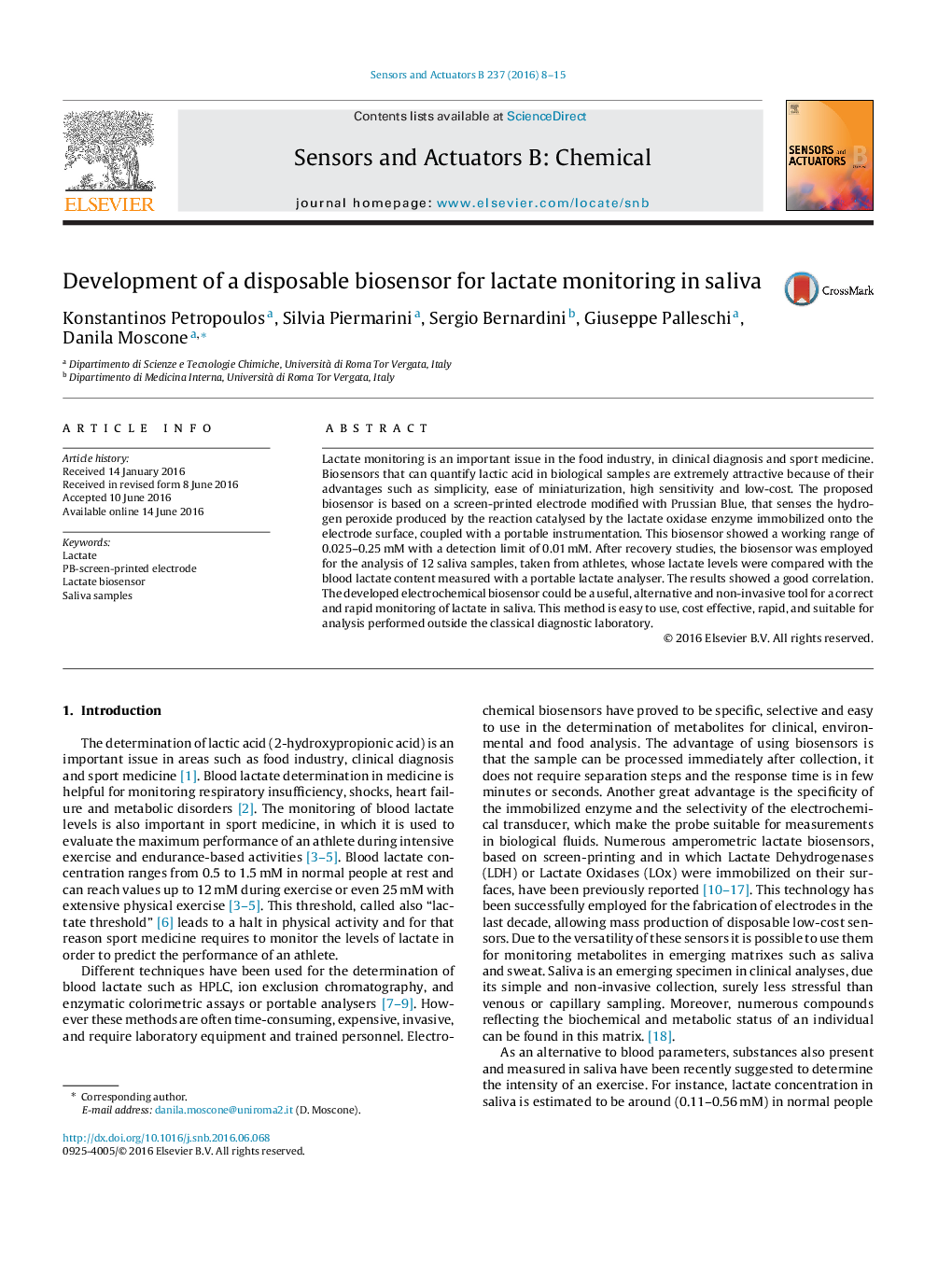| Article ID | Journal | Published Year | Pages | File Type |
|---|---|---|---|---|
| 742223 | Sensors and Actuators B: Chemical | 2016 | 8 Pages |
•Development of a disposable lactate oxidase biosensor based on a Prussian Blue modified screen-printed electrode.•Application of the biosensor to saliva samples.•A new protocol for saliva treatment has been proposed.•Comparison of the biosensor results with those obtained using a routine hand-held blood lactate analyzer.•The developed biosensor could be a useful and non-invasive tool for a rapid and in situ monitoring of lactate in saliva.
Lactate monitoring is an important issue in the food industry, in clinical diagnosis and sport medicine. Biosensors that can quantify lactic acid in biological samples are extremely attractive because of their advantages such as simplicity, ease of miniaturization, high sensitivity and low-cost. The proposed biosensor is based on a screen-printed electrode modified with Prussian Blue, that senses the hydrogen peroxide produced by the reaction catalysed by the lactate oxidase enzyme immobilized onto the electrode surface, coupled with a portable instrumentation. This biosensor showed a working range of 0.025–0.25 mM with a detection limit of 0.01 mM. After recovery studies, the biosensor was employed for the analysis of 12 saliva samples, taken from athletes, whose lactate levels were compared with the blood lactate content measured with a portable lactate analyser. The results showed a good correlation. The developed electrochemical biosensor could be a useful, alternative and non-invasive tool for a correct and rapid monitoring of lactate in saliva. This method is easy to use, cost effective, rapid, and suitable for analysis performed outside the classical diagnostic laboratory.
